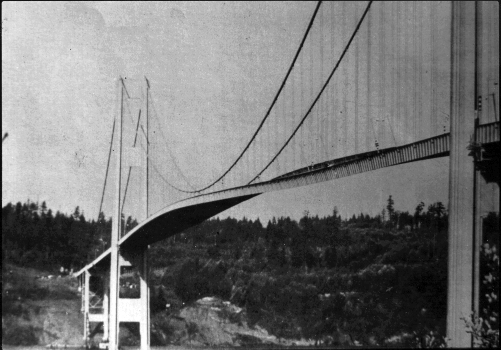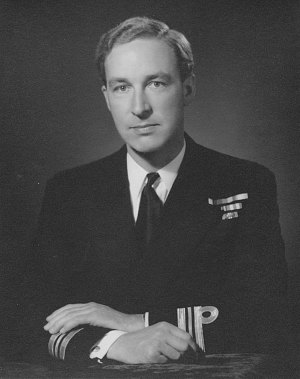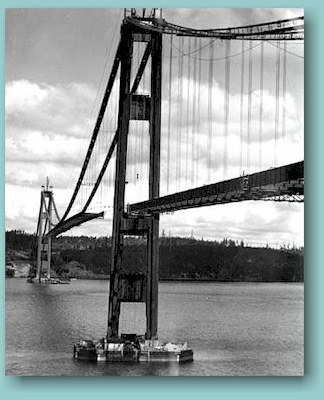Friday 8 November 1940
The Italians are making no progress at all on the Elaia–Kalamas front in Epirus, so they suspend operations there. The Italians make no further progress past Igoumenitsa and Margariti and are pushed off the Grabala Heights again.
In the Pindus Mountains, the remaining troops of the Julia Division hear a broadcast from London which suggests that a Greek offensive is coming. The Italians begin trying to break out as best they can. The Italian 3rd Alpini (mountain) Division is stuck fast in the Vovousa Valley and is losing men daily. While some of the Julia Division men can get out of the trap, very few of the 3rd Alpini can escape.
General Ubaldo Soddu, State Undersecretary of War, replaces General Prasca. He immediately tells Mussolini that the Italian forces must go over to the defensive "while awaiting the reinforcements that would permit us to resume action as soon as possible." This is a wise suggestion to which Mussolini gives his consent, but illustrates the catastrophic posture of an offensive that only began less than two weeks ago. While the Italians will indeed receive reinforcements, so will the Greeks, and the Greek reinforcements only have to march to the front, not requiring risky ship transport.
The Greeks, meanwhile, are calling in reinforcements from their other fronts, such as the Metaxas Line facing Bulgaria. They are comfortable for the time being that no attack will be launched by the Bulgarians or the Turks. This, and the growing British presence in southern Greece which relieves the Greeks of defensive responsibilities there, enables Metaxas and his Generals to begin building up forces opposite the Italians for a counterattack.
Italian problems are only getting worse. There is a clear strain on Italian resources between the North African and Albanian campaigns. The British, meanwhile, are reinforcing their own forces in both Greece and Egypt.
The Italians bomb Monastir.
 |
| "Nighttime view of the Houses of Parliament, Westminster, London in 1940." © IWM (D 717). |
While most Stuka dive-bombers have been withdrawn, the Luftwaffe still has some Stuka formations along the coast for special purposes. Today, they go back into action and bomb shipping in the Straits of Dover. Stukas may be slow and vulnerable relative to top RAF fighters, but they also are extremely accurate ground attack planes that are irreplaceable in the Luftwaffe (and the Luftwaffe tries to replace them several times, but fails to find anything better). The Stukas once again prove their value by sinking a ship.
RAF Bomber Command bombs Munich. There is a special reason for this: it is the anniversary of the 1923 Putsch, and Hitler always gives a highly touted speech in Munich to commemorate it. Not much damage is done, but Churchill and the RAF bigwigs make their little statement, one of several similar stunts they will engage in around this time. While some accounts state that "Hitler narrowly escaped" and so forth, in fact, it is extremely difficult and unlikely - especially at this stage of the war, with extremely imprecise bombing accuracy - to target and kill a specific individual. One might as well say that every time the RAF bombs Berlin with Hitler in residence there that it "almost killed Hitler."
This Munich attack damages railway installations and also the beer cellar where Hitler gives his speeches (but was largely destroyed exactly a year ago in a domestic terrorism incident). The RAF also bombs other targets in Germany, including numerous airfields in northwest Europe. Coastal Command chips in with an attack on Lorient to disrupt U-boat operations.
Lt. Heinz Bär, 1./JG 51, shoots down two Hurricanes.
 |
| Major Heinz Bär, May 1944. Bär ultimately fought on every German front and is credited with 221 aerial victories. |
Luftwaffe Stukas attack Convoy FN 329 in the Thames Estuary. They bomb and sink 1930 ton Dutch freighter Agamemnon. Two crewmen perish. The Luftwaffe also damages 1350 ton British freighter Ewell, 5596-ton British freighter Empire Dorado and 1568 ton British freighter Catford in the Thames estuary. The Royal Navy escort ship HMS Winchester (Lt Cdr S. E. Crewe Read) shoots down two of the Junkers Ju 87 Stukas.
This raid begins a sequence of events that cripples HMS Winchester. It is only lightly damaged by near misses in the air attack, but then is damaged by a mine and, while anchored to get repairs, is attacked by air again. This all requires extensive repair in London that will take until 6 June 1941.
Luftwaffe Focke-Wulf Fw 200 Condors (1,/KG 40) spot Convoy HX 84 in the Atlantic west of County Donegal, Ireland. They drop two bombs on and disable 2734 ton Swedish freighter Vingaland. There are 19 survivors and six men perish. The ship is left a blazing derelict and easy prey for any submarine which can spot the plume of smoke or the fire itself. The Italian submarine Marconi will finish the job and sink the Vingaland on the 9th.
Italian submarine Marconi itself is attacked by Royal Navy destroyer HMS Havelock off northwest Ireland. It sustains some damage but escapes.
In a separate attack, the Luftwaffe attack, Heinkel He 115 seaplanes (KGr 506) bomb and damage 1261-ton British freighter Fireglow in the North Sea off Turk Head.
Kriegsmarine auxiliary submarine chasers 520 ton UJ-117 "Uhlenhorst" and 445-ton UJ 1104 "Westfalen" spot 934 ton Royal Netherlands Navy submarine HNLMS O-22 off Lindesnes, Vest-Agder, Norway. They depth-charge and sink the O-22. Everybody on board perishes. The wreck is found in 1993 some 60 miles away from the supposed spot of the attack. The Dutch believe that the O-22 may have survived the attack, but was damaged (the wreck does show depth charge damage) and either managed to get part-way home before succumbing to the damage or hit a mine afterward. There are 42 Dutch and 3 British deaths.
Royal Navy 221 ton converted whaler HMS A.N.2 hits a mine and sinks in the English Channel off Falmouth, Cornwall in southwest England.
Royal Navy 192 ton tug HMS Muria hits a mine and sinks in the North Sea north of Margate, Kent. Everyone on board perishes.
Royal Navy minesweeper HMS Elgin is damaged by an acoustic mine off the Sunk Light Vessel and requires repairs at Lowestoft.
Royal Norwegian Navy offshore patrol boat HNoMS Fridtjof Nansen runs aground and is lost on an unmarked shallow off the south coast of the Norwegian Arctic island Jan Mayen. Before the Nansen founders, the crew manages to get off some emergency messages. The crew reaches land on the Eggøya peninsula and finds an abandoned Norwegian radio station and is rescued some days later by naval trawler HNoMS Honningsvåg. This was the first Norwegian naval ship built purposefully for the coast guard and fishery protection. The ship was one of thirteen Royal Norwegian Navy ships that had escaped from Norway when the government capitulated.
U-47 spots Portuguese freighter Goncalo Velho off Portugal and surfaces. The U-boat fires a warning shot to stop the ship, but it turns toward the U-boat. The Germans, confused as to its intentions, fire another two shots, one of which damages the neutral ship in the stern. Once examined, the ship is allowed to proceed because no contraband is found.
Convoy OB 240 departs from Liverpool, Convoy FN 329 departs from Southend, Convoy FS 331 departs from Methil.
Royal Navy Hunt-class destroyer Southdown ( (L 25, Commander Edward R. Conder) is commissioned. It now heads to Scapa Flow for working up.
 |
| "A female member of Air Raid Precautions staff applies her lipstick between emergency calls." 8 November 1940. © IWM (D 176). |
French battleship Provence arrives at Toulon from Mers el Kebir, where it was damaged in the Royal Navy attack.
RAF bombers bomb Turin aircraft factories and the Pirelli magneto factory in Milan. The RAF also bombs Tobruk and Derna, Libya, and also Italian bases in Abyssinia.
Five Wellington bombers based on Malta attack Brindisi. They hit the railway station there and demolish it. Four other Wellingtons bomb Naples with incendiaries. On Malta, RAF Station Ta Qali (sometimes termed Takali) becomes operational. The airfield has had to be cleared of obstructions to prevent enemy landings - it is a former civilian field - and to host a Hurricane squadron.
Some native Maltese have been accused of distributing anti-British leaflets "and other seditious material." Today, two are acquitted, three are sentenced to three years of imprisonment. and two are sentenced to four years.
Battle of the Pacific: Another ship falls afoul of the mines being laid off Southern Australia. This time, it is the US City of Rayville. It sinks in the Bass Strait off Cape Otway. There are 37 survivors and one crewman perishes. Some accounts place this on the 9th.
The Australian authorities are now fully aware that German minelayers are operating in the vicinity of Southern Australia, so they close the port of Melbourne for the time being. German raider Pinguin and the Passat, who have been laying the mines, have completed their work and are heading west for the middle of the Indian Ocean to plan their next operation.
 |
| Aerial view of the Tacoma Narrows Bridge after the collapse, taken November 8, 1940. Seattle Post-Intelligencer Collection, PI- 20796. Courtesy of the Museum of History and Industry, Seattle. |
Anglo/US Relations: President Roosevelt vows to send half of all US military output to Great Britain. Now that the election is past, he can be more aggressive in his support of England.
German Government: Hitler gives his annual speech in Munich to commemorate the failed 1923 Putsch. Speaking in the Löwenbräukeller, he vows retribution for RAF attacks on Berlin. Somewhat ironically, Hitler has had to move the speech up due to fears of RAF attacks on the site of his speech (fears that prove well-founded).
Hitler states that he has always felt that "the Germanic races had to come together" and that as part of this effort "I wished to establish close bonds of friendship with England." In this, however, "we met with failure regarding England." Hitler blames the war on "war profiteers" and states that he is "indifferent" to the war because it will only go on "until we end it."
As he continues, Hitler drops his conciliatory tone and begins to rage against Winston Churchill, calling him "World History's 'General Liar'" (Generallugner der Weltgeschichte) and a "common criminal." "I will show them who shall be destroyed!" he vows. One somewhat humorous aspect for those reading the speech now is that at one point he says, "And, summing up," but then proceeds to give the bulk of his speech.
US Military: The US War Department announces that it will set up a new training center in Spartanburg County, South Carolina. It will be known as Camp Croft Infantry Replacement Training Center, after Major General Edward Croft who came from the state and retired as Chief of Infantry. The camp will be officially activated on 10 January 1941 as part of the Fourth Service Command.
Gabon: General Koenig's troops have landed at Pointe La Mondah, near Libreville, which is still held by Vichy forces. The Vichy forces resist vigorously, but they have few sources of reinforcement or supply. Success in this operation is vital to General de Gaulle's reputation, as the failed invasion of Dakar has cast a cloud over his military reputation.
French Homefront: The Vichy government bans union confederations.
American Homefront: Twentieth Century Fox Film Corporation releases "The Mark of Zorro," starring Tyrone Power as Diego, Linda Darnell as Lolita Quintero and Basil Rathbone as Captain Esteban Pasquale.
 |
| "The Mark of Zorro" starring Tyrone Power is released on 8 November 1940. |
November 1, 1940: Hitler Irate
November 2, 1940: U-31 Sunk - Again
November 3, 1940: Kretschmer's Master Class
November 4, 1940: Spain Absorbs Tangier
November 5, 1940: Jervis Bay Meets Admiral Scheer
November 6, 1940: San Demetrio Incident
November 7, 1940: Galloping Gertie
November 8, 1940: Italian Shakeup in Greece
November 9, 1940: Dutch Fascists March
November 10, 1940: Fala and Doc Strange
November 11, 1940: Taranto Raid
November 12, 1940: Molotov Takes Berlin
November 13, 1940: Molotov Foils Hitler
November 14, 1940: Moonlight Sonata
November 15, 1940: Warsaw Ghetto Sealed
November 16, 1940: France Keeps Battleships
November 17, 1940: Malta Hurricane Disaster
November 18, 1940: Hitler Berates Ciano
November 19, 1940: Birmingham Devastated
November 20, 1940: Hungary Joins Axis
November 21, 1940: Dies White Paper
November 22, 1940: Italians Take Korçë
November 23, 1940: U-Boat Bonanza!
November 24, 1940: Slovakia Joins In
November 25, 1940: Molotov's Demands
November 26, 1940: Bananas Be Gone
November 27, 1940: Cape Spartivento Battle
November 28, 1940: Wick Perishes
November 29, 1940: Trouble in Indochina
November 30, 1940: Lucy and Desi Marry
2020




















